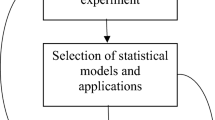Abstract
If cryptocurrencies are perceived as financial innovations that could disrupt domestic and international financial systems, it becomes imperative for economists to incorporate these virtual currencies into existing money market models. Cryptocurrencies, when fully adopted by the general public, would transmit into the financial system via money demand. Cryptocurrencies serve as money and non-money assets and have no perfect substitute, whereas they are perfect substitutes for M1. Therefore, how much impact would the popularity of cryptocurrencies have on domestic and international capital mobility? To isolate interest rate differentials across countries, the Mundell-Fleming model that assumes a constant interest rate in domestic and world economies was applied. Cryptocurrencies acquired in past periods that are acceptable worldwide would abrogate exchange rate differentials. This study theoretically finds that fiscal and monetary policies would have different impacts on income in economies with high cryptocurrency circulations compared to economies with only M1. Also, there is a critical interest rate where cryptocurrencies would be more attractive to investors than other non-money assets. Moreover, using the Keynesian aggregate income and aggregate expenditure model, without interest and exchange rate differentials, the worldwide use of cryptocurrencies in international trade would unveil the link between the twin deficits and international capital flows.


Similar content being viewed by others
References
Ammous, S. (2018). Can Cryptocurrencies Fulfill the Functions of Money? The Quarterly Review of Economics and Finance, 70(1), 38–51.
Ball, L. (2012). Short-run Money Demand. Journal of Monetary Economics, 59(7), 622–633.
Baumol, W. (1952). The Transaction Demand for Cash: An Inventory Theoretic Approach. Quarterly Journal of Economics, 66(4), 545–556.
Black, D., & Dowd, M. (1994). The Money Multiplier, the Money Market and the LM Curve. Eastern Economic Journal, 20(3), 301–310.
Branson, W. (1989). Macroeconomic Theory and Policy. New York, NY: Harper & Row.
Canton, J. (2019). Crypto Liquidity: The Blockchain and Monetary Stability. Journal of Entrepreneurship and Public Policy, 9(2), 227–252.
Carbaugh, R. (2017). International Economics (16th ed.). Boston, MA: Cengage Learning.
Cebula, R. (1985). Money Multiplier and the Slope of IS-LM: Comment. Southern Economic Journal, 51(3), 906–908.
Cooper, R. (1969). Macroeconomic Policy Adjustment in Interdependent Economies. The Quarterly Journal of Economics, 83(1), 1–24.
Daniel, K., & Murphy, N. (1994). The Impact of Technological Change on the Currency Behavior of Households: An Empirical Cross-Sectional Study. Journal of Money, Credit and Banking, 26(4), 867–874.
Dotsey, M. (1984). An Investigation of Cash Management Practices and their Effects on the Demand for Money. FED of Richmond Economic Review, 70(5), 3–12.
Ghosh, D., & Elyasiani, E. (1985). Money Multipliers and the Slopes of IS-LM Curve: Comment. Southern Economic Journal, 51(3), 909–915.
Guidotti, P. (1993). Currency Substitution and Financial Innovation. Journal of Money, Credit and Banking, 25(1), 109–124.
Gurley, J., & Shaw, E. (1960). Money in a Theory of Finance. Washington DC: The Brookings Institution.
Hafer, R., & Hein, S. (1984). Financial Innovations and the Interest Elasticity of Money Demand: Some Historical Evidence. Journal of Money, Credit and Banking, 16(2), 247–252.
Harrigan, F., & McGregor, P. (1985). Interregional Arbitrage and the Supply of Loanable Funds: A Model of Intermediate Financial Capital Mobility. Journal of Regional Science, 27(3), 357–367.
Ireland, P. (1995). Endogenous Financial Innovation and the Demand for Money. Journal of Money, Credit and Banking, 27(1), 107–123.
Keynes, J. (1936). The General Theory Employment, Interest, and Money. London: Harcourt.
Korinek, A. (2017). “Currency Wars or Efficient Spillovers? A General Theory of International Cooperation.” BIS Working Paper No. 615. https://ssrn.com/abstract=2938832
Kostika, E., & Laopodis, N. (2020). Dynamic Linkages among Cryptocurrencies, Exchange Rates and Global Equity Markets. Studies in Economics and Finance, 37(2), 243–265.
Li, S., & Huang, Y. (2020). Do Cryptocurrencies Increase the Systematic Risk of the Global Financial Market? China and World Economy, 28(1), 122–143.
Masciandaro, D. (2018). Central Bank Digital Cash and Cryptocurrencies: Insights from a New Baumol-Friedman Demand for Money. The American Economic Review, 51(4), 540–550.
Meyer, P. (1983). Money Multipliers and the Slopes of IS-LM. Southern Economic Journal, 50(1), 226–229.
Meyer, P. (1985). Money Multipliers and the Slopes of IS-LM Curves: Reply. Southern Economic Journal, 51(3), 916–920.
St. Onge, P. (2017). “What Gives Cryptocurrencies Their Values?” Mises Wire, 1 December. https://mises.org/wire/what-gives-cryptocurrencies-their-value
Swan, M. (2015). Blockchain: Blueprint for a New Economy. Sebastopol, CA: O’Reilly.
Tobin, J. (1958). Liquidity Preference as Behavior Toward Risk. Review of Economic Studies, 25(2), 65–86.
Wang, Y. (2011). The Stability of Money Demand in the U.S.: A New Approach. Economics Letters, 111(1), 60–63.
Acknowledgement
I would like to express my sincere thanks to reviewer number one for the constructive and unselfish inputs to this paper. All the errors are mine.
Author information
Authors and Affiliations
Corresponding author
Additional information
Publisher’s Note
Springer Nature remains neutral with regard to jurisdictional claims in published maps and institutional affiliations.
Rights and permissions
About this article
Cite this article
Enajero, S. Cryptocurrency, Money Demand and the Mundell-Fleming Model of International Capital Mobility. Atl Econ J 49, 57–69 (2021). https://doi.org/10.1007/s11293-021-09701-w
Accepted:
Published:
Issue Date:
DOI: https://doi.org/10.1007/s11293-021-09701-w




